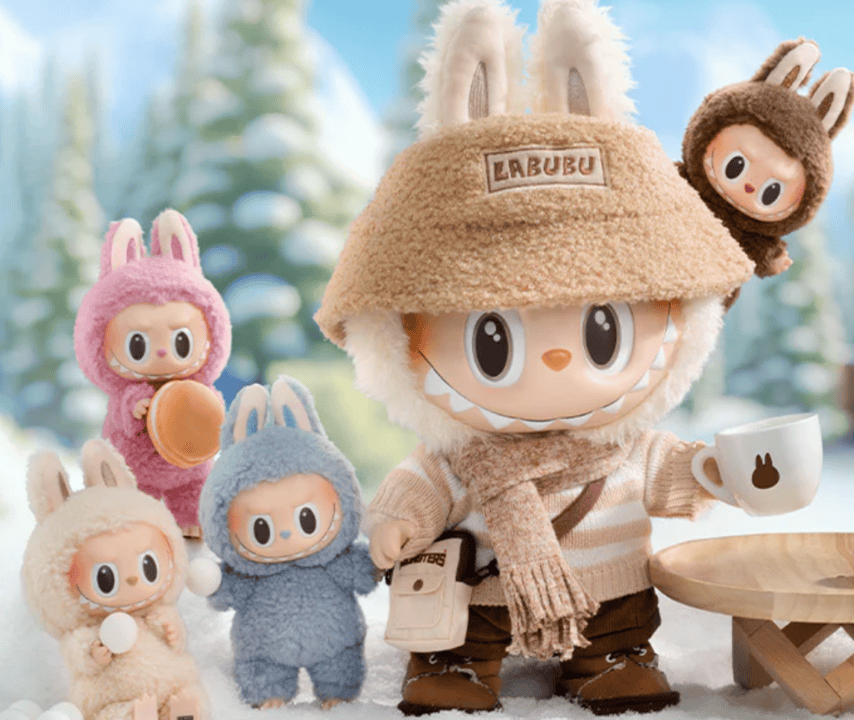*The opinions expressed in this article are the author’s own and do not reflect the official views of ICMR.

Labubu isn’t your average collectible. Behind its whimsical smile and playful appearance lies a billion-dollar marketing strategy that’s both fascinating and controversial. Created by artist Kasing Lung, and later popularised by Pop Mart, Labubu highlights how powerful consumer psychology and clever marketing can turn niche items into global sensations.
But, it also raises an important question: should we encourage businesses to replicate this model, or should we be wary of its potential pitfalls?
How a Little Monster Conquered the World
Labubu’s journey from a niche collectible into a global sensation was no accident. Pop Mart strategically positioned Labubu through engaging product experiences, such as selling it in blind boxes – a mystery package where buyers don’t know exactly what they will be receiving until it’s opened. This tactic leveraged excitement, surprise, and the thrill of discovery, hooking consumers into repeated purchases. Combined with artificial scarcity, carefully limiting availability to boost desirability, Pop Mart created a perfect storm of consumer enthusiasm.
Interestingly, Labubu also gained significant attention organically thanks to celebrities like Lalisa from Black Pink sharing their collections and featuring the toys on social media. The company benefitted greatly from the increased visibility, which further amplified Labubu’s appeal, making it a must-have item among fans worldwide.
Reimagining Lip Stick Effect: Labubu is an Affordable Luxury
Labubu brilliantly reimagines the “lipstick effect”, the idea that during tough economic times, consumers still spend money on small indulgences as a form of self-treat or to maintain a sense or normalcy during difficult times. But instead of buying cosmetics, today’s consumers find joy in small collectibles like Labubu. The emotional payoff of opening a blind box, combined with an affordable price, makes Labubu an ideal affordable luxury, particularly appealing during uncertain economic times. In Chinese, we term it as “little joys in life (生活中的小确幸).”
Is This Business Model Encouraged?
Yet, Labubu’s brilliant model actually sparks debate. On one hand, it shows companies how to thrive during challenging economic times through innovative marketing, emotional appeal, and affordability. Businesses that understand these factors can replicate Labubu’s success to build lasting customer relationships and steady revenue.
But on the other hand, critics worry about potential downsides. Artificial scarcity, combined with blind-box mechanics, can exploit consumers’ emotional impulses, leading them to overspend or develop unhealthy buying habits. There’s also an important sustainability question: what happens when consumers tire of these collectible toys, how many is enough, and ask yourself whether you will still remember it after a decade. All these purchases are leaving millions of plastic figures behind…
Can Businesses Use This Model Differently?
Actually, I think they already are—just in a quieter, more meaningful way. I recently visited GMBB, a creative community mall in Kuala Lumpur, and it really struck me how many of the small businesses there are doing something similar to Labubu’s model, but with so much more heart.
 Picture of GMBB Mall in Bukit Bintang, Kuala Lumpur
Picture of GMBB Mall in Bukit Bintang, Kuala Lumpur
These are local makers selling handcrafted items, home decor, accessories—things made with care, often using sustainable or long-lasting materials. Some of their products are released in small batches, not because of hype or artificial scarcity, but because that’s the nature of handmade, thoughtful work. And in a way, that makes every piece feel more special.
What I also love is how these brands often collaborate with one another—whether it’s joint exhibitions, pop-ups, or campaigns to raise awareness about cultural or environmental issues. There’s a real sense of community and shared purpose. And honestly, it reminds me that the emotional connection, the excitement of discovering something unique, and the joy of owning something meaningful—that’s the same feeling Labubu taps into.

Picture of one of the small businesses in GMBB Mall
So yes, the model works—but it can be reimagined for good. It’s not just about selling more, it’s about creating something that actually matters.
My Verdict As A Labubu Owner: A Powerful Strategy That Requires Caution
Labubu’s billion-dollar journey proves how deeply consumer psychology, nostalgia, and a sense of joy can drive modern markets. But the takeaway isn’t just about scarcity or surprise, it’s about how products can connect with people on a human level.
Businesses should tread carefully, balancing excitement with ethics. Because when used irresponsibly, even the cutest marketing model can lead to burnout, waste, or backlash.
But if a product genuinely brings someone a moment of happiness in ways that are responsible, sustainable, and with intention—why not embrace it? As the beloved artist Bob Ross once said, “It’s so important to do something every day that will make you happy.” And maybe, just maybe, we all deserve a little monster hanging from our bag to remind us of that.


